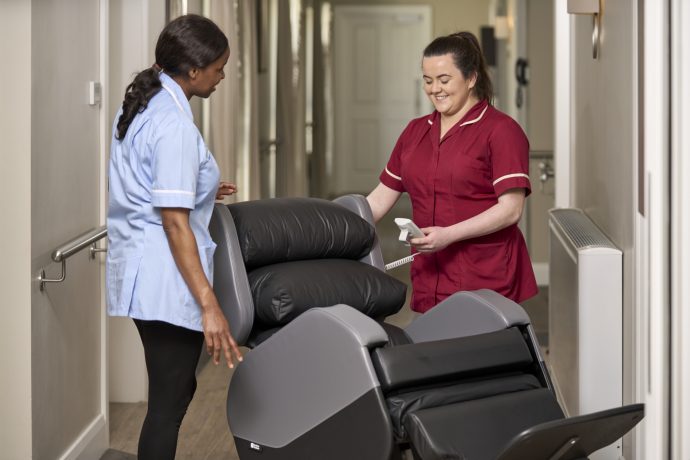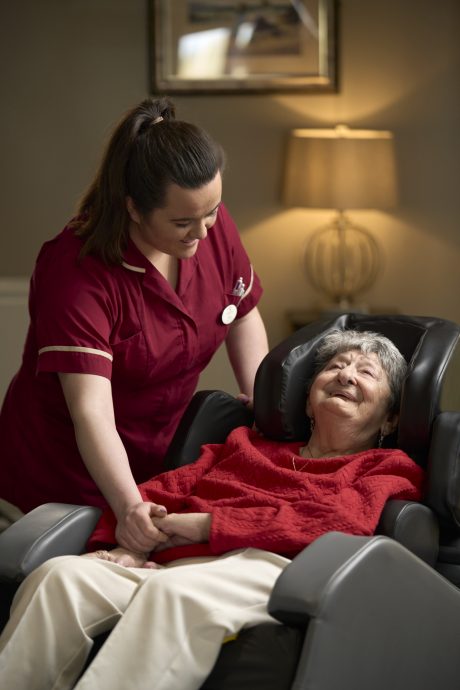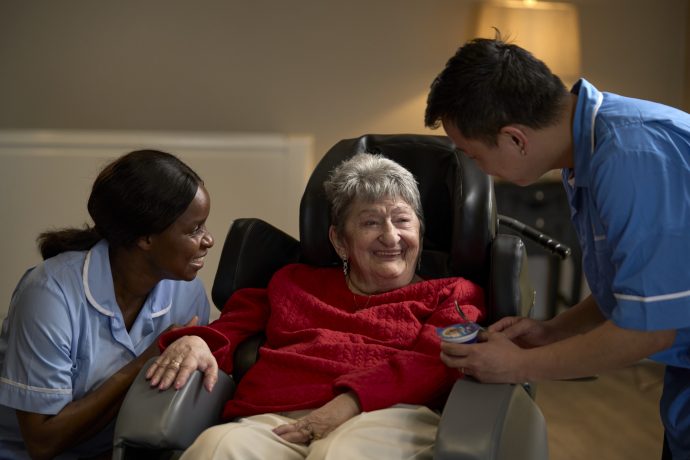
2nd September 2025
Empowering clinicians with expert-led training on clinical seating, pressure injury prevention, and best practice.
Learn More

Let our online product finder guide you through our simple steps to choose the chairs that best meet your patient’s needs.
Seating Solution FinderThe Envelo cushion provides excellent pressure redistribution and comes as standard on all Seating Matters chairs, meeting the clinical needs of most clients.
Explore Envelo RangeSeating Matters specialises in clinical, therapeutic seating solutions designed to improve patient care and safety, offering products for pressure injury prevention, postural support, and mobility assistance in healthcare settings.
Learn MoreDiscover how Seating Matters has transformed lives with our innovative seating solutions - read our inspiring customer success stories now!
Customer StoriesUsed in academia, in clinical practice and with caregivers around the world to guide their practices around specialist seating.
Download Free HandbookDementia, a progressive brain disorder affecting cognitive abilities, memory, and behaviour, can present a challenge both for the person living with dementia and their caregivers.

Enhancing Physical Comfort
Clinical seating plays a fundamental role in ensuring the physical comfort of people with dementia. Individuals with dementia often struggle with mobility issues, which can lead to difficulties in maintaining proper posture or sitting for extended periods. Therapeutic seating with features such as adjustable lumbar support, cushioning, and armrests provide optimal support and reduce pressure points. Implementing clinical seating tailored to the individual's needs can alleviate discomfort and promote better spine alignment, preventing the development of musculoskeletal issues.
Promoting Independence and Autonomy
Another crucial aspect of clinical seating is the preservation of the persons' independence and autonomy. By incorporating features like height adjustability and easy manoeuvrability, caregivers empower the person with dementia to engage in activities such as eating, reading, or socializing without constant assistance. Such independence enhances their overall sense of self-worth and dignity, fostering a positive emotional environment that is essential in combating dementia-related depression and anxiety.
Facilitating Engagement and Social Interaction
Clinical seating has proven to be instrumental in facilitating engagement and social interaction among people living with dementia. Specifically designed seating arrangements in communal spaces within clinical settings encourage conversation, shared experiences, and support for others experiencing similar challenges. The physical proximity resulting from these seating arrangements can stimulate communication and foster a sense of belonging, addressing the social isolation often experienced by people living with dementia. Tilt in recline feature on the Atlanta chair provides the person with optimum field of vision to see and interact with their environment, despite the level of tilt.
Providing sensory information
Research finds that many people living with dementia have reduced sensation, proprioception and bodily feedback in their bodies.
The cushions provide optimum envelopment and immersion to provide proprioceptive feedback and help reduce distress, The tilt and recline feature redistributes weight and pressure to reduce risk of pressure injuries, and also to transfer weight off the sacrum and the person’s back and legs to provide additional sensory information.
Providing a Safe Environment
People with dementia often face increased risks of falls and injuries due to impaired balance and coordination. Clinical seating, with a low seat to floor height contributes to creating a safe environment. This feature reduces the risk of accidental falls, providing both the person with dementia and caregivers with peace of mind.
Cognitive Stimulation and Environmental Adaptation
Clinical seating also plays a vital role in supporting environmental design. The adaptation of seating to mirror familiar domestic settings can have a calming effect, reducing confusion and disorientation frequently experienced by people with dementia. Colour choices which have contrasting LRV (light reflectance value) can help the person with visual difficulties distinguish between different surfaces, helping with better positioning in the chair and reducing levels of distress. Seating Matters can be consulted to recommend optimum colour options with contrasting LRVs or the floors and the walls to help the person with dementia navigate their environment safely and maximise their abilities.
Aiding Caregivers' Duties
Clinical seating not only benefits the person living with dementia but also plays a significant role in supporting caregivers' duties. Chairs equipped with features like moisture-resistant fabrics or easy-clean surfaces simplify caregiving tasks, enabling efficient cleaning and reducing the risk of bacterial contamination. Moreover, the ability to lock wheels or stabilize the seat allows caregivers to manage patient transfers more safely and effectively.
Two of our chairs have been accredited by the Dementia Services Development Centre (DSDC) at the University of Sterling. This means these chairs have been clinically and officially recommended for patients with dementia.
Seating Matters Sorrento Chair
The benefits of the Sorrento chair for the dementia patient include:
+ Providing trunk and lateral support through the selection of back cushions, additional lateral supports and height adjustable armrests.
+ Providing proprioceptive feedback for the whole body.
+ Tilt and space feature to facilitate frequent redistribute weight and pressure to reduce the risk of pressure injuries developing.
+ Easy to maneuver, which allows users to remain more sociable and prevents them from being confined to one place at a time. Decreases frequency of transfers.
+ Higher seat to floor height to support caregivers when using full hoists or providing care.
+ Anterior tilt to facilitate safe, independent transfers if the person is mobile and reduce the risk of falls.
+ Helps increase comfort, reduces agitation, and promotes relaxation.

We have found Seating Matters Atlanta chair works exceptionally well for patients with non-cognitive symptoms of dementia and those experiencing delirium. It is my experience that when the patient relaxes and feels safe, their muscle tone reduces. This reduces the risk of the development of pressure injuries and contractures and reduces pain, so they are able to engage in functional activities.
The benefits of the Atlanta chair for the patient with dementia or delirium include:
+ Providing proprioceptive feedback for the whole body.
+ Tilt and recline feature and high armrests which provides a cocooning feeling and sense of safety.
+ Easy to maneuver, which allows users to remain more sociable and prevents them from being confined to one place at a time. Decreases frequency of transfers.
+ Low seat to floor height reduces the risk of falls and injury in event of a fall.
+ Helps increase comfort, reduces agitation, and promotes relaxation.

+ Reducing falls and sliding.
+ Reducing risk of pressure injuries, high muscle tone and contractures.
+ Reducing pharmacological interventions for pain or agitation
+ Improving the patients’ function and reducing nurse/carers input.
+ Increasing time spent out of bed.
+ Reducing level of distress by reducing the frequency of transfers
+ Providing sensory information by giving proprioceptive feedback
The importance of clinical seating for people living with dementia is clear. From optimizing physical comfort and independence to facilitating social interaction and to sensory inform, therapeutic seating greatly contributes to the overall well-being of individuals living with dementia. By recognizing the significance of clinical seating and acknowledging its potential impact, caregivers and healthcare professionals can embrace this essential component of dementia care, enhancing the quality of life for the person with dementia and their families.
References

2nd September 2025

15th August 2025

15th August 2025